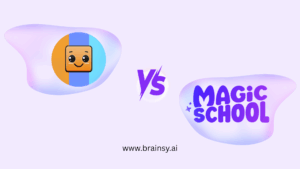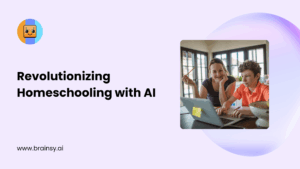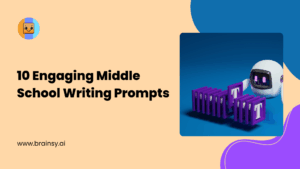
Introduction to AI tools for teachers
As an educator, I continually seek innovative ai educational tools and artificial intelligence in the classroom to elevate my students’ learning experiences. AI for education, a pivotal force in educational transformation, promises to reshape our pedagogical methods. A wealth of AI education tools, including ai tools for educators, free for educators, stands ready to be integrated into their teaching strategies. This article delves into the essence of AI, its advantages for AI teachers, and the diverse ways these ai tools for teachers can enhance the educational journey.
What is AI and How Can Teachers Benefit?
Artificial intelligence, or AI, emulates human cognitive abilities through machines designed to think, reason, and learn, akin to human intellect. Within education AI, the goal of AI is to forge AI education tools and systems that bolster teachers in multifaceted aspects of their roles. From enabling personalized learning and assessments to streamlining classroom management and organization, artificial intelligence is on course to make teaching more streamlined and impactful.
We are Brainsy AI
Elevate your teaching experience with Brainsy AI, where innovative technology meets education. Our platform is designed to simplify the complexities of teaching, providing educators with advanced tools powered by Artificial Intelligence. Say goodbye to traditional methods and embrace a dynamic approach to instruction. Brainsy AI is not just a tool; it’s your partner in transforming education.
Teachers can harness the power of AI educational tools in numerous ways. AI teacher tools, for example, can take over repetitive tasks such as grading, allowing educators to devote more time to lesson planning and interactive teaching. Furthermore, AI in the classroom offers customized learning experiences for students, adapting educational content to their unique abilities and skill levels, thus improving student engagement and achievement. In addition, ai tools for students can simplify classroom management by monitoring student progress, behavior, and attendance efficiently. These benefits make ai tools for teachers essential in modern classrooms, while ai tools for educators continue to evolve and support innovative teaching strategies.
Benefits of using AI tools in the classroom
Adopting AI tools in educational settings brings manifold benefits, particularly in crafting personalized pathways for student growth. AI in classrooms empowers educators to leverage data analytics to give tailored feedback and suggestions, enabling students to advance at their preferred pace. Such individualized educational approaches are crucial in elevating student engagement and motivation.
Another advantage of deploying AI help in the form of teacher AI tools in the classroom is their capacity to manage routine tasks. Responsibilities like grading, monitoring attendance, and lesson planning can be burdensome for educators. AI’s grading tool and productivity solutions can take charge of these duties, freeing teachers to concentrate on delivering exceptional classroom experiences and nurturing strong student-teacher relationships.
Teaching AI tools are also pivotal in boosting collaboration and communication among students. AI in classrooms promotes group projects, the exchange of ideas, and immediate feedback, cultivating a culture of community and teamwork. This not only enhances social and emotional learning but also prepares students for the collaborative dynamics of today’s workforce.
Debunking Myths Surrounding AI in Classrooms
Despite the myriad advantages, certain myths and misconceptions about AI in the classroom persist. A prevalent myth is the fear that AI will replace teachers. However, the truth is that artificial intelligence is designed to supplement and support educators, not replace them. While AI tools offer invaluable assistance and resources, the distinct human touch and expertise that teachers contribute to the learning environment remain indispensable.
Demystifying the notion that advanced technology is complex, AI for teachers has become increasingly accessible, thanks to user-friendly AI tools. These innovative resources, coupled with professional development courses, facilitate seamless technology integration in the classroom. With the right professional development courses, educators can easily incorporate these AI tools into their teaching strategies, thereby enriching the learning experience.

When implementing AI websites for students, it’s crucial to prioritize data privacy and strictly adhere to AI security protocols. These AI help tools must comply with stringent privacy regulations and deploy robust security measures to protect student information. It’s the responsibility of educators to ensure that their selected AI resources, including ai tools for teachers, rigorously follow data protection laws, safeguarding their students’ data privacy.
How AI tools can enhance teaching and learning

AI education tools for educators are paving the way for individualized instruction through adaptive learning techniques. By analyzing student performance data, these innovative platforms provide customized recommendations and resources, catering to the unique needs of each learner. Such individualized instruction empowers students to learn at their own pace, effectively closing learning gaps as they arise.
AI in assessment is transforming the way educators evaluate student work and deliver feedback. AI educational tools, such as AI-powered online grading tools, can automate the grading process, providing immediate feedback to students. This innovation streamlines the assessment process for teachers and ensures that students receive timely insights to advance their educational journey.

AI education tools are revolutionizing student engagement and introducing generative AI collaboration tools into the educational sphere. By leveraging virtual and augmented reality, AI creates captivating, interactive learning experiences that engage students and reinvigorate education. Additionally, AI educational tools designed for collaboration promote teamwork and improve communication skills among learners.
Top free AI tools for teachers
Join the forefront of educational innovation with Brainsy AI. Experience the future of teaching with our cutting-edge platform that adapts to your unique teaching style. From lesson planning to student engagement, Brainsy AI is your companion in making every aspect of teaching more efficient, effective, and enjoyable. Embrace the future of education with Brainsy AI today.
Investigating the advantages of AI in education, we discover various leading free AI platforms suitable for classroom adoption. Notably, OpenAI’s ChatGPT stands out as a premier AI platform, providing free, interactive experiences, thereby becoming an invaluable tool for educators globally.
1. Teachable AI
At the forefront of educational technology, Teachable AI excels in delivering personalized learning experiences with its sophisticated machine learning algorithms. This AI-powered platform meticulously analyzes student data to create personalized pathways and insights, enabling educators to monitor academic progress and pinpoint areas where students may require additional support.
2. Grammarly
Grammarly, the AI-powered writing assistant, has become an essential AI educational tool for students eager to enhance their writing abilities. Grammarly supports language learning by helping students craft more refined written work by offering real-time corrections for grammar, spelling, and punctuation. Educators, too, can leverage this advanced AI tool to provide comprehensive feedback on student writing, further enriching the educational experience.
3. Quizlet
Quizlet stands out as an AI education tool that empowers students to create custom flashcards, quizzes, and study materials tailored to their individualized instruction needs. Its smart algorithms adapt to each learner’s style, ensuring a personalized study experience. Similarly, educators can turn to Quizizz, another AI-powered platform, to develop customized study aids and monitor student progress effectively, making it one of the valuable ai tools for teachers in today’s classrooms.
The vast selection of free AI educational tools available today offers educators a treasure trove of options to enhance their teaching strategies and effectively address diverse student needs. Educators must delve into and experiment with these resources to identify the ones that seamlessly integrate with their pedagogical approach.
Best AI tools for student engagement and collaboration
Boosting student engagement and cultivating a collaborative classroom environment are pivotal for successful learning outcomes. Utilizing the best ai in classroom tools can significantly elevate interaction and teamwork, thereby enriching the educational experience and fostering student engagement.
1. Nearpod
Nearpod, an AI educational tool, transforms the teaching landscape by enabling educators to craft interactive learning experiences with multimedia elements. Features like quizzes, polls, and virtual reality journeys within Nearpod captivate students’ focus, adding an interactive layer to the learning process.
2. Flipgrid
Flipgrid, a pioneering video discussion platform, is redefining AI in classroom engagement by enhancing social and emotional learning. By creating video prompts, educators encourage students to engage in lively discussions, fostering a sense of community and promoting meaningful peer-to-peer interactions.
3. Edmodo
Edmodo, a leading social learning platform, provides educators with AI education tools necessary for establishing a digital classroom where collaborative learning thrives. With its integrated quizzes and assignments, Edmodo simplifies the process for teachers to evaluate and follow their students’ educational journeys.
Incorporating AI in classroom settings bolsters collaboration and communication, offering students dynamic opportunities for active participation in their learning journey. By weaving AI educational tools into your teaching strategies, you can cultivate an environment that’s not only engaging but also conducive to collaborative learning.
Integrating AI tools into lesson planning and curriculum design
AI educational tools for lesson planning are indispensable for educators, acting as a cornerstone in curriculum development. In the following discourse, we will highlight a range of AI tools that are instrumental in aiding teachers to devise lesson content that is both effective and innovative:
1. Edpuzzle
Edpuzzle, an exemplar of AI education tools, transforms the way interactive learning is infused into video lessons. This innovative platform allows educators to augment videos with interactive elements such as questions and quizzes, thus elevating the learning material and yielding valuable analytics on student engagement and performance.
2. SMART Learning Suite
The SMART Learning Suite, powered by AI technology, provides an extensive array of tools perfect for lesson planning and curriculum development. It includes features like interactive whiteboards and adaptable lesson templates, enabling teachers to create captivating lessons that accommodate diverse learning styles as educational tools.
3. Classcraft
Classcraft stands out as an AI-driven gamification tool, leading the charge in creating immersive learning experiences. This platform empowers educators to design quests and monitor student progress, excelling in boosting student engagement and transforming the educational process into an interactive learning adventure.
By integrating AI educational tools into curriculum design, educators can craft interactive lessons that engage and address the diverse needs of students, ensuring that every learner’s potential is effectively tapped.
AI tools for classroom management and organization
Managing a classroom is a multifaceted challenge, yet AI in classroom management can simplify and enhance this demanding role. Here, we explore an array of AI tools that are essential for refining classroom organization and management, making them indispensable assets for educators.

1. ClassDojo
ClassDojo, a pioneering platform in the realm of student behavior management, leverages AI to revolutionize classroom dynamics. As an AI education tool, it enhances teachers’ ability to track and uplift student behavior and engagement. This innovative platform rewards positive student behavior with points and offers vital feedback, thereby fostering greater parent participation in their children’s education.
2. Socrative
Socrative sets itself apart as an AI-powered grading tool that provides educators with the capabilities to craft quizzes, conduct polls, and distribute exit tickets. As an AI educational tool, it supplies instant feedback and analytics, equipping teachers with the insights needed to monitor student progress and pinpoint areas in need of further instruction.
3. Google Classroom
Google Classroom, a prominent AI education tool, streamlines the workflow of assigning and collecting assignments, delivering feedback, and enhancing communication. It enables educators to establish virtual classrooms, disseminate educational content, and engage with students more effectively, thereby elevating the classroom management experience.

These AI in-classroom tools are instrumental in automating routine tasks and offering valuable insights into student behavior and achievement, leading to more efficient classroom organization. Educators embracing these advanced technologies can save time and polish their teaching strategies for better outcomes.
Training and professional development resources for using AI tools
While AI educational tools offer significant enhancements to teaching and learning, educators must pursue professional development courses and in-depth training in these AI technologies. Such preparation ensures seamless integration of ai tools for educators into their teaching practices, bolstered by an extensive range of support resources for teacher leadership.
This comprehensive guide to AI for education is an invaluable asset for understanding AI’s impact on learning environments, providing practical tips and strategies for the deployment of AI educational tools in classrooms. It explores key topics such as individualized learning, cutting-edge assessment techniques, classroom management, and opportunities for professional development.
2. Online Courses and Webinars
A variety of professional development courses and webinars, centered on AI in education, are accessible to educators seeking experiential, hands-on training. These educational platforms not only enable teachers to skillfully implement AI tools but also validate their proficiency with certifications that underscore their expertise in AI and teacher leadership.
3. Teacher Communities and Forums
Participating in teacher communities and engaging in teacher forums offers educators a dynamic avenue to connect with peers skilled in weaving AI tools into their teaching methods. These collaborative spaces are vital for sharing cutting-edge ideas and materials, as well as fostering teamwork on academic ventures, ultimately enhancing the educational journey.
Educators who delve into professional development courses significantly boost their capabilities and refine their teaching skills, particularly with AI tools. Such dedication is crucial for advancing the educational experience and delivering enriched value to learners, contributing to overall educator wellness.
Common Challenges and Their Solutions

Addressing the hurdles of AI in classroom settings is essential, despite the technology’s numerous advantages. A fundamental approach to surmount these challenges is to guarantee equitable access to technology for all students, thus leveling the playing field and extending AI’s benefits to every learner.
1. Lack of Access to Technology
The lack of critical technology for leveraging AI tools in some educational settings can be a significant barrier. Proactively pursuing funding for AI tools and investigating free AI tools are strategic measures that can offer comparable benefits, enabling a wider spectrum of educational entities to harness AI’s transformative power.
2. Lack of Training and Support
The obstacle of insufficient teacher training and support can hinder the effective implementation of AI tools in education. It is vital for institutions to prioritize professional development courses and teacher training, equipping educators with necessary skills and encouraging a culture of collaboration for the exchange of insights and best practices.
3. Data Privacy and Security Concerns
Upholding stringent data privacy and security protocols is paramount when deploying AI tools in educational environments. Educators and institutions must diligently select AI solutions with responsibility, and educate all stakeholders on data privacy to ensure the trust and protection of students and their families.
By acknowledging the educational challenges and adopting strategic solutions, educators can tap into the extensive advantages of AI in the classroom. This proactive stance paves the way for revolutionizing the educational landscape and significantly improving learning outcomes.
Inspiring Stories of AI Adoption in Classrooms
To further illustrate the profound impact of AI tools in the classroom, we’re presenting inspiring stories that demonstrate how AI in classroom settings is revolutionizing student learning outcomes. These narratives underscore the transformative role AI plays in elevating the educational journey.
1. The Power of Personalized Learning
In a rural school district, educators harnessed the power of adaptive learning, an AI-driven tool, to craft personalized learning experiences uniquely suited to their students’ needs. This sophisticated platform, considered one of the best ai tools for teachers, conducted thorough student data analysis, generating tailored content and recommendations that markedly increased student engagement and elevated academic performance.
2. Enhancing Collaboration and Communication
A high school English teacher introduced AI collaboration tools into her curriculum, enabling students to work together on writing projects, exchange creative insights, and gain instant feedback. This forward-thinking method did more than just enhance their writing skills; it also cultivated a strong sense of community and teamwork within the classroom.
3. Streamlining Classroom Management
Utilizing an AI-powered classroom management tool, a middle school teacher adeptly monitored student behavior and engagement. This state-of-the-art tool delivered immediate data and insights, allowing the educator to swiftly tackle behavioral issues and promote positive conduct, thereby fostering a constructive classroom atmosphere.
These compelling accounts underscore the transformative power of AI in education and spotlight the considerable influence these tools can wield on student engagement and learning. They provide a window into the future of how AI is set to elevate educational outcomes in diverse learning settings.
Conclusion
The integration of AI tools in education can significantly enrich the teaching and learning experience, with the potential to transform the educational landscape. AI’s capabilities extend from providing personalized learning and assessment to enhancing classroom management and organization. By tapping into the plethora of free AI tools available, educators can devise more dynamic, interactive, and tailored learning experiences. However, it’s crucial for teachers to receive comprehensive training and support to effectively weave AI in classroom practices. Armed with the appropriate tools and resources, educators can unleash the full potential of AI to transform their teaching environments.





